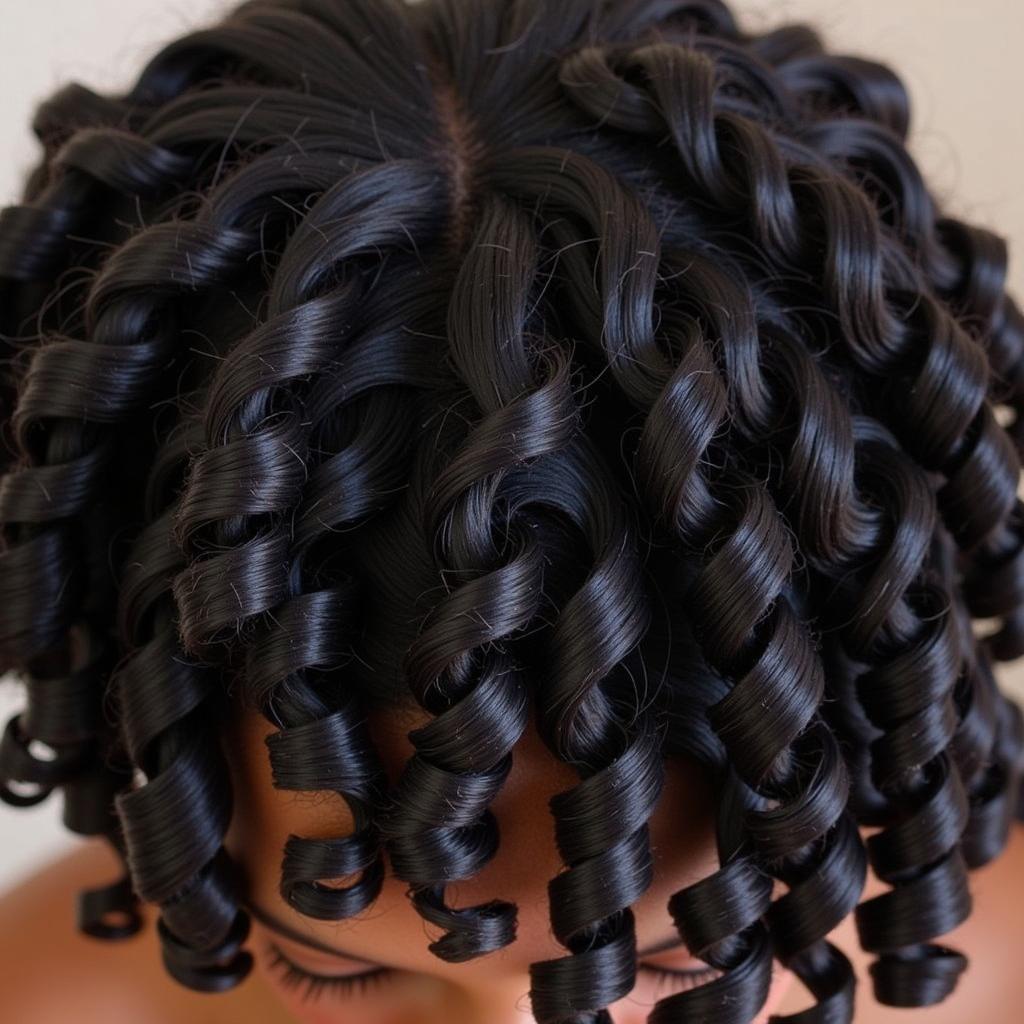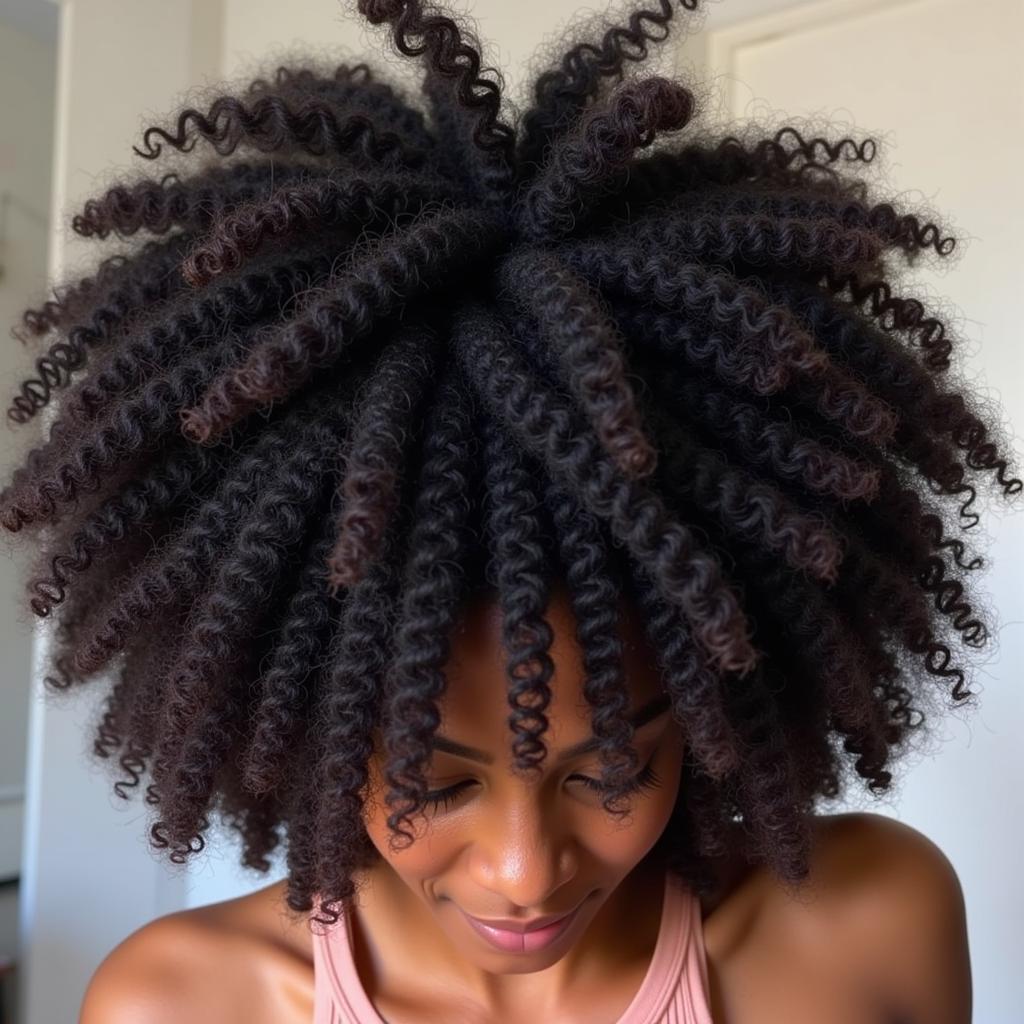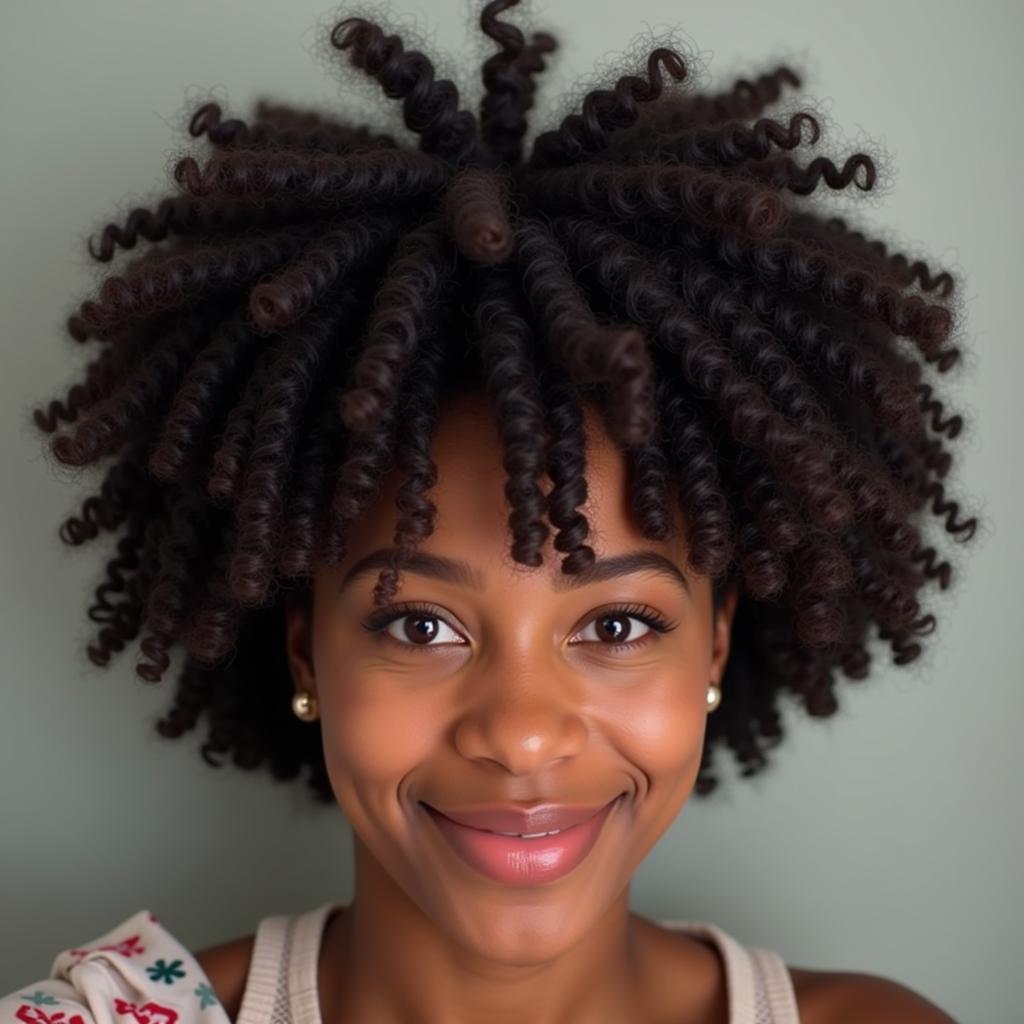Understanding African Hair Types
African hair, a crown of coils and curls, is as diverse as the continent itself. From the tightest kinks to looser waves, understanding the nuances of African Hair Types is key to proper hair care and styling. This guide delves into the unique characteristics, challenges, and best practices for maintaining healthy and vibrant African hair.
Delving into the Science of African Hair Types
African hair types are broadly categorized based on the curl pattern, which is determined by the shape of the hair follicle. The most widely recognized system, the Andre Walker Hair Typing System, classifies African hair into four main types: 4A, 4B, 4C, and sometimes even 3C, with each type exhibiting unique characteristics.
Type 4A: Defined Coils with a Visible Curl Pattern
Type 4A hair boasts well-defined, springy coils that resemble small corkscrews. These coils have a visible “S” pattern and are prone to shrinkage. While generally retaining moisture well, 4A hair can be delicate and requires gentle handling to prevent breakage.
 African Hair Type 4A
African Hair Type 4A
Type 4B: Z-Shaped Coils with a Less Defined Curl Pattern
Type 4B hair is characterized by its tight, Z-shaped coils that are less defined than 4A. The hair strands bend at sharp angles, creating a fluffy and voluminous look. This hair type is highly prone to shrinkage and can be prone to dryness due to its tightly packed coils.
 African Hair Type 4B
African Hair Type 4B
Type 4C: Tightly Coiled with a Minimal Curl Pattern
Type 4C hair features tightly packed, coily strands with a minimal curl pattern. The coils are often so tightly wound that they appear to shrink down significantly. 4C hair is incredibly versatile and can be styled in various ways, but it requires extra care to retain moisture and prevent breakage.
 African Hair Type 4C
African Hair Type 4C
Embracing the Beauty and Challenges of African Hair
African hair is more than just strands; it’s a symbol of heritage, identity, and beauty. The unique texture and versatility of African hair have inspired countless hairstyles, braids, and cultural traditions. However, embracing the beauty of African hair also means understanding and addressing the challenges that come with it.
Dryness and Breakage: Common Concerns
The tightly coiled structure of African hair makes it susceptible to dryness and breakage. The natural oils produced by the scalp have a harder time traveling down the hair shaft, leading to dryness and frizz. This dryness, coupled with the fragility of the coils, makes African hair prone to breakage, especially when not handled with care.
Product Selection and Styling Techniques
Choosing the right hair care products is crucial for maintaining healthy and vibrant African hair. Look for products specifically designed for curly and coily hair types, focusing on moisturizing ingredients like shea butter, coconut oil, and aloe vera. Avoid products containing harsh sulfates, parabens, and silicones, as these can strip the hair of its natural oils and lead to dryness.
Tips for Maintaining Healthy and Vibrant African Hair
Maintaining healthy and vibrant African hair requires a holistic approach that encompasses product selection, styling techniques, and overall hair care practices.
Moisturizing is Key
Regular moisturizing is paramount for combating dryness and breakage. Incorporate deep conditioning treatments into your hair care routine at least once a week to provide intense hydration. Additionally, use a water-based leave-in conditioner to keep the hair moisturized between washes.
Protective Styling for Minimal Manipulation
Protective styles, such as braids, twists, and locs, are excellent for minimizing manipulation and protecting the hair from environmental damage. However, it’s important to avoid styles that are too tight or left in for extended periods, as this can lead to traction alopecia.
Gentle Detangling and Heat Styling
Detangling African hair should always be done with care and patience. Use a wide-tooth comb or your fingers to gently work through knots and tangles, starting from the ends and working your way up. If using heat styling tools, always apply a heat protectant spray beforehand and use the lowest heat setting possible to minimize damage.
Conclusion: Celebrating the Diversity of African Hair
From the tightest kinks to the loosest waves, African hair is a testament to the diversity and beauty of the African continent. Understanding your hair type is the first step towards developing a hair care routine that caters to its specific needs. By embracing the unique characteristics of your hair and following these tips, you can maintain healthy, vibrant, and beautiful African hair.
FAQs about African Hair Types:
1. What is the difference between 4B and 4C hair?
While both types have tight coils, 4B hair forms more defined “Z” shapes, while 4C hair coils are tightly packed with minimal curl definition.
2. What are some good protective styles for African hair?
Braids, twists, locs, and wigs are popular protective styles that minimize manipulation and protect hair.
3. How often should I wash my African hair?
Washing frequency depends on your hair type and lifestyle. Generally, washing once a week or every other week is recommended to avoid stripping natural oils.
4. Can I use heat styling tools on African hair?
While possible, heat styling should be done sparingly and with a heat protectant. Excessive heat can lead to dryness and damage.
5. Where can I find more information on African hairstyles and hair care?
For a deeper dive into African king hair, explore resources online and consult with experienced hairstylists specializing in African hair. You can also find useful information on African beauty secrets cosmetics that are specifically designed for these unique hair types.
Need more support on your African hair journey? Contact us at +255768904061, kaka.mag@gmail.com, or visit us in Mbarali DC Mawindi, Kangaga, Tanzania. Our dedicated customer care team is available 24/7 to assist you.
